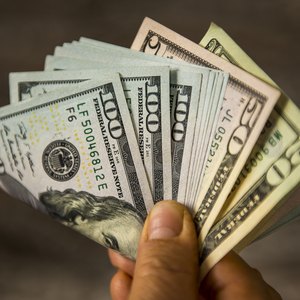
Money orders are a fast and secure method of payment, which makes them an excellent choice when paying bills or transferring money to friends and family across the country or abroad. Additionally, many businesses that prefer not to accept personal checks will accept money orders because they know the money has to be paid up front and there is no risk that the money order isn’t good. In fact, money orders can even be replaced if lost or stolen.
Tips
Money orders require valid photo identification from both the sender of the order and the recipient.
What Are Money Orders?
A money order is a form of money transfer that uses a printed document similar to a check. Money orders are sold by the United States Postal Service (USPS) and by commercial providers, such as Western Union and MoneyGram. The USPS can send money anywhere in the United States plus about 28 foreign countries, mainly in Latin America. Western Union has a network of agents worldwide; money can be sent almost anywhere using their service. There's also MoneyGram, which allows users to send money orders to over 200 countries.
Find a Location
The first step in sending a money order is to find a place to purchase one. USPS money orders may be purchased at any U.S. post office, including rural route carriers and on military facilities overseas. Western Union agents include supermarkets, convenience stores and check-cashing stores. You may purchase money orders in person at your bank, or at any location that displays a MoneyGram money order sign.
Buy Money Orders Via USPS
When you buy a money order from the USPS, you must fill out the money order with your name, address and phone number. You may include an e-mail address if you wish. You also need the recipient’s name and address. If you purchase more than $1,000 worth of money orders in a single day, you have to show a valid photo ID (for example, a driver’s license, state ID or military ID). For amounts more than $3,000, you’ll have to complete Form 8105 (Funds Transaction Report). Payment is by cash, traveler’s check or credit/debit card.
Buy Money Orders Via Commercial Providers
When you buy money orders through a commercial provider, you need to supply information for both the payee and purchaser. List your name, address and phone number on the required form along with the name and address of the recipient. As with a USPS money order, you will need to show a valid photo ID if purchasing a money order for a large amount.
Money Orders – Advantages and Disadvantages
While money orders remain one of the safest and most reliable forms of nondigital payment available today, there are certain disadvantages associated with this service. For example, money orders often have a relatively slow transit time compared to online transfers and traditional wires. That being said, the fact that money orders require a valid photo ID and signature in order to be issued by the sender and cashed by the recipient ensures that these documents can be mailed without worrying about theft or fraud.
References
- Western Union: Money Orders
- USPS: Domestic Money Orders
- USPS: 371 International Money Orders
- MoneyGram: Frequently Asked Questions
- USPS: Publication 342 - USPS Anti-Money Laundering Program
- Walmart. "Money Order Review." Accessed Feb. 13, 2020.
- Wells Fargo. "Wells Fargo Consumer and Business Account Fees." Accessed Feb. 13, 2020.
- Citi. "Compare Benefits: Options to Fit Your Needs." Accessed Feb. 13, 2020.
- USPS.com. "Sending Money Orders." Accessed Feb. 13, 2020.
- USPS.com. "Domestic Money Orders." Accessed Feb. 13, 2020.
- Western Union. "Western Union Money Orders." Accessed Feb. 13, 2020.
Writer Bio
Ryan Cockerham is a nationally recognized author specializing in all things innovation, business and creativity. His work has served the business, nonprofit and political community. Ryan's work has been featured at Zacks Investment Research, SFGate Home Guides, Bloomberg, HuffPost and more.

